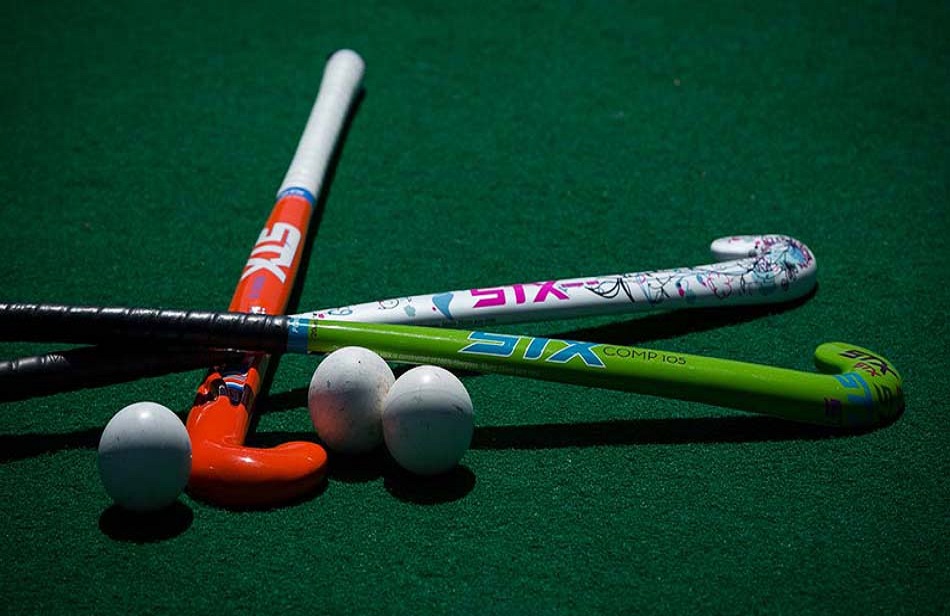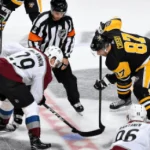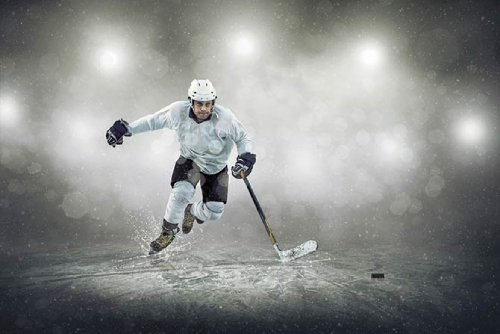
Whether you’re new to the rink or a seasoned fan, understanding hockey terms is key to truly enjoying the game. From classic strategies like the forecheck to colorful slang like “bar down” or “celly,” hockey has a language all its own. This ultimate A–Z glossary breaks down essential terms, tactical phrases, and locker room lingo to help you boost your hockey IQ. Whether you’re watching from the stands, coaching behind the bench, or lacing up your skates, mastering these hockey terms will deepen your connection to the sport and its fast-paced, hard-hitting culture.
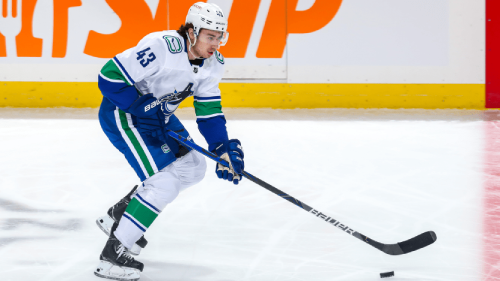
Content
Backcheck – When players skate hard back toward their defensive zone to stop the opposing team’s attack. Good backchecking is key to strong two-way play.
Clapper – A slang term for a slap shot. If someone “rips a clapper,” it means they unleashed a hard, booming shot.
D-to-D Pass – A pass between two defensemen. Often used to switch the play across the ice or reset positioning.
Enforcer – A player whose role is to protect teammates and intimidate opponents. While less common in today’s NHL, enforcers were once staples on every team.
Forecheck – The pressure applied by attacking players in the offensive zone to regain puck control. Aggressive forechecking can disrupt the opponent’s breakout.
Gino – Slang for a goal. “He sniped a gino top shelf!”
Half Boards – The area of the rink along the boards between the blue line and the goal line, often used to set up plays or battle for the puck.
Iron – The goalposts and crossbar. “He rang it off the iron” means the shot hit the post but didn’t go in.
Jamb – A scramble in front of the net, usually involving multiple players trying to shove the puck in or out of the crease.
Keep – A “keep” is when a defenseman successfully holds the puck in the offensive zone at the blue line during an opponent’s clearing attempt.
Lid – Another word for helmet, often interchangeable with “bucket.”
Muzzy – Slang for mustache. It’s more cultural than tactical—common during playoff season for “playoff muzzies.”
Neutral Zone Trap – A defensive strategy designed to clog the neutral zone and prevent offensive rushes. Famously used by the New Jersey Devils in the 1990s.
Off the Pipe – When the puck hits the post or crossbar.
Pinch – When a defenseman moves deep into the offensive zone to keep the puck in or apply pressure. Risky but potentially game-changing.
Quick Shift – A short line change to conserve energy or adapt quickly to play. Coaches emphasize quick shifts to maintain high intensity.
Rim the Puck – When a player shoots or passes the puck around the boards to move it behind the net or around the zone.
Screen – Blocking the goalie’s view with a player, usually in front of the net. Screens are crucial for scoring on long-range shots.
Toe Drag – A fancy stickhandling move where a player pulls the puck toward themselves and then around a defender.
Undress – Slang for beating a defender badly with a move. “He undressed him at the blue line!”
Vermin – A playful insult used in beer league or chirping situations, usually meant jokingly.
Waffleboard – Old-school slang for the goalie’s blocker pad. Still used by vintage hockey fans.
X-Factor – A player who can turn a game with an unexpected play or high-skill moment, often unpredictable but impactful.
Yank – When a coach pulls the goalie from the game due to poor performance or to get an extra attacker on the ice.
Zamboni – The machine that resurfaces the ice. Named after its inventor, Frank Zamboni. A fan favorite during intermissions!
Deep Dive: Essential Hockey Concepts
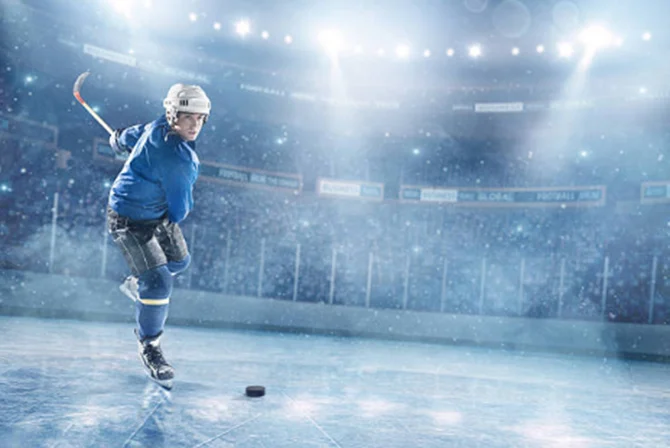
To build your hockey IQ beyond just words, let’s break down some key concepts and phrases often mentioned in games and by coaches.
The 4 Lines in Hockey: Explained
Each hockey team typically rotates four lines of forwards, each with its own role:
- First Line – Star players and goal scorers.
- Second Line – Skilled contributors with strong offensive upside.
- Third Line – Two-way forwards, often tasked with defending and checking.
- Fourth Line – Physical players, agitators, or energy line players.
This rotation helps balance stamina and strategy, especially during high-intensity matchups.
The 3 Shots in Hockey
Understanding shot types gives insight into scoring styles and technique.
- Wrist Shot – Quick release, great for accuracy and sneaky goals.
- Slap Shot – Requires wind-up, high power, often used from the point.
- Snap Shot – A mix between wrist and slap, ideal for fast scoring in tight spaces.
Elite players like Auston Matthews and Alex Ovechkin are famous for combining shot types based on situation.
Offensive and Defensive Zones
The ice rink is divided into:
- Offensive Zone – Where your team tries to score.
- Defensive Zone – Where you protect your net.
- Neutral Zone – The center area, key for transitions and positioning.
Teams structure their play around these zones with strategies like zone defense, stretch passes, or cycle plays.
Equipment Lingo: Know Your Gear
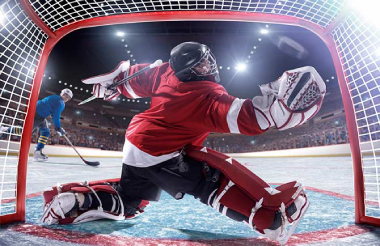
Understanding gear-related hockey terms helps demystify locker room talk and gear selection:
- Twig – A hockey stick.
- Blade – The flat part of the stick that makes contact with the puck.
- Cage – Full facial protection on a helmet.
- Shell – The outer layer of a player’s pants (also called “breezers”).
- Cup Check – Usually a painful way to test whether someone wore their protective gear.
Goalies, in particular, have their own set of terms:
- Pillow – Goalie leg pad.
- Glove Side – The side a goalie catches with.
- Blocker Side – The side with the rectangular pad used to deflect shots.
Fun Hockey Slang from the Rink
A few more gems you’ll hear in locker rooms, beer leagues, or the bleachers:
- Bar Down – A shot that hits the crossbar and goes in—pure beauty.
- Flow – Long, flowing hair sticking out of the helmet. “That guy’s got great flow.”
- Cel – Short for celebration after a goal.
- Dusting the Puck – Overhandling or wasting time with the puck before shooting.
- Hoser – A classic Canadian term for someone who loses. Originally, losers had to hose down the rink.
Why Learning Hockey Terms Matters
Understanding these hockey terms does more than just help you watch the game. It builds:
- Confidence – You’ll feel more at home in conversations with teammates and fans.
- Comprehension – You’ll understand the game’s rhythm, rules, and strategy better.
- Connection – You’ll share a language with millions of fans around the world.
Whether you’re coaching, playing, or cheering from the stands, a strong grip on common hockey terms can deepen your appreciation for the game.
Want More? Keep This Hockey Glossary Handy
As with the sport itself, the hockey glossary is always evolving. New terms pop up every season, especially with younger players bringing their own flair.
This guide covers:
- Basic hockey terms
- Slang and inside lingo
- Tactical terminology
- Gear references
Final Thoughts
Mastering hockey terms isn’t just about vocabulary—it’s about becoming part of the culture. From the locker room to the rinkside banter, knowing your hockey terminology helps you connect, compete, and appreciate the game on a deeper level.
FAQs Common Questions About Hockey Terms
What are the terms used in hockey?
Hockey is filled with both official terminology and colorful slang. From rules like “offside” and “icing” to lingo like “apple,” “dangle,” or “chirp,” players and fans use a mix of traditional and informal language to describe plays, gear, and on-ice action.
What are the 3 shots in hockey?
The three most common shots in hockey are:
Wrist Shot – Quick, accurate, and used often.
Slap Shot – Powerful and dramatic, but slower to release.
Snap Shot – A hybrid of the two; quick release with decent power.
How many terms are in hockey?
There’s no fixed number, but a comprehensive hockey glossary can include over 100 terms, including official rulebook terminology and popular slang used by players, coaches, and fans.
What are the 4 lines in hockey?
In a typical game, teams rotate four forward lines:
First Line – Most skilled scorers.
Second Line – Strong contributors, often two-way players.
Third Line – Gritty, defensive-minded forwards.
Fourth Line – Energy players, penalty killers, and enforcers.

Eldon Barrett’s knowledge of sports is boundless. His in-depth analysis and captivating storytelling will make you see the games you love in a whole new light.

